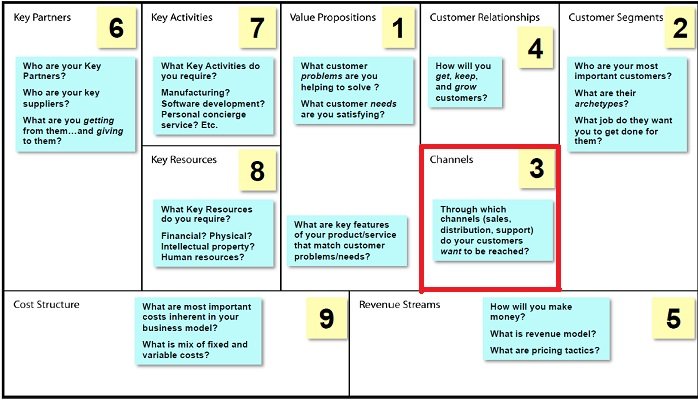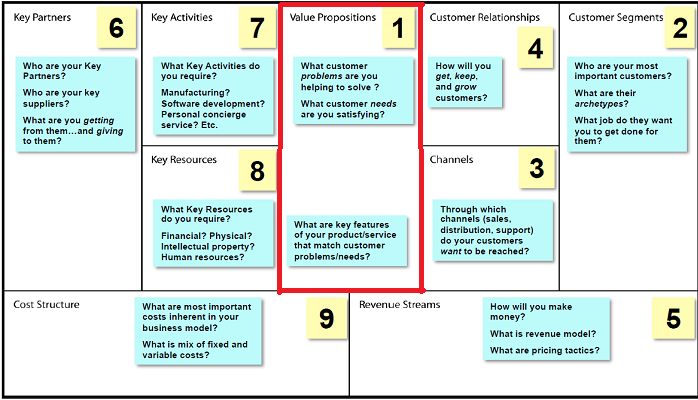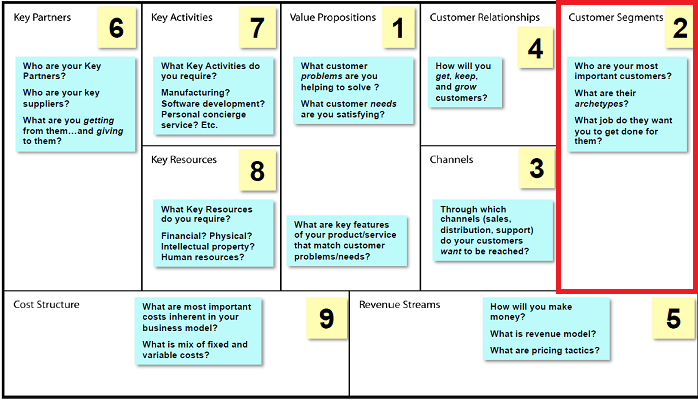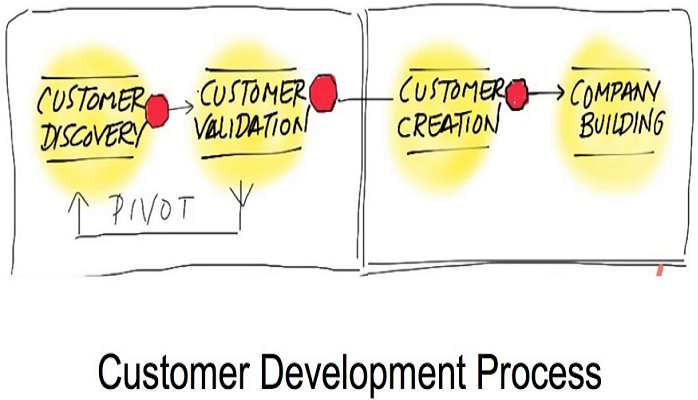
CUSTOMER RELATIONSHIP BUILDING BLOCK
This building block dictates the nature of the relationships that an organization will develop with its various customer segments. Remember in the customer segment box we learned exactly who our client was, where they lived, how they purchased, and many other things (we learned the archetypal client). This is the fun section for me, because now that we have a thorough understanding who our client is, its time to GET-KEEP-GROW the customer base. Lets look at each one of these three sections individually. I will be using my new chain of restaurants, called Bella’s www.bellas-restaurant.com, as an example throughout this article.
GET. Getting clients into your pipeline can be broken up into two categories: Paid and Earned.
Paid Media. This would be things like advertising on TV, radio, newspapers, buying Google ad words, etc. What we did at Bella’s restaurant was to start a Facebook Page and boost every posting we made. We started off with posts on the first day of construction and continued until opening night. Clients told us how they felt a part of the development. We did advertising on radio, TV, and magazines two weeks before opening to flood the market. This was a very direct type of marketing since we already knew who to target from our customer segment interviews
Earned Media. This is public relations. This is the best type of media money cannot buy. Bella’s started off by sending press releases to all the media outlets in town, because they are all looking for content and love local stories. From that point, they requested interviews for their news programs ore news papers. This campaign started two months before opening. On opening night there were three TV stations, two newspapers, and two magazines that came and wrote about the event. All this publicity cost us nothing!
So, now how does one acquire, and, once in the pipeline, activate their potential clients? This is the first of three sections of the Get-Keep-Grow model.
Acquire. Customer acquisition is the process of persuading a customer to select your organization’s product or service over the competition’s. A number of mediums and tactics are available for entrepreneurs today who are interested in acquiring customers for their business. Here are a few:
Content Marketing. For entrepreneurs with limited resources, content marketing is a very appealing and useful alternative. This is your branding (i.e., logo, website, company story, fliers) and any content that you put together about why you exist in the market place. Bella’s created their logo and trademarked it. Our story was about my parents-in-law coming from Rome to do our cooking. We filmed all this and added it to our content.
Search Engine Optimization. Now it’s time to take your content and share it with the world. The more people who are exposed to it and share it, the higher your content will rank in search results, which is one of the most effective ways of getting your product noticed by your target customer. I do not believe in hiring an SEO. I do it myself, as should you. We placed everything on Facebook, Instagram, newspapers, TV etc. All this goes on the web and increases your visibility
Email Marketing. On Facebook we would have competitions for a free dinner on opening night, and continue to do so even now. For the entry, we get the clients’ names and email addresses. We also get this information when they make reservations. This information is rich and the best way to get to your clients directly. We then use Constant Contact to send out weekly emails with promotional material and specials of the weekend.
Social Media Marketing. You cannot be dependent exclusively on social media to get the word of your product or service out in the market. When used in collaboration with other tactics, however, social media can elevate your product significantly in your target customer segment’s estimation. It is much easier to target a specific market using social media than other forms of advertising.
Conversion Rate Optimization. The more your company starts attracting customers, the stronger your chances are of acquiring them by making minor tweaks to your content and outlook.
Analytics. It is not just enough to mobilize word of your products through the media mentioned above. If companies do not use data gleaned from one or more of these resources and analyze it to better understand their customers, they are not taking full advantage of the investment they have made.
Customer Retention. This refers to the long-term relationship a company establishes with its customers. The more repeat customers a company has, the more it is assured of champions who will market its products and help it acquire additional customers.
Below are some strategies businesses can use to retain their customers and form long-term relationships with them.
Stand for Something. Customers are more loyal to brands that they identify with, or those that they feel represent traits and characteristics that they would like to emulate. Therefore, it is imperative for a company to select what its brand stands for and communicate that to its customers.
Utilize Positive Social Proof. Websites that provide customers with facts that show how the use of their product will improve their social standing are more likely to help the company retain customers in the long term.
Invoke the Inner Ego. Customers are automatically more inclined to a product based on how much it reflects qualities that they feel exist in themselves. This is called implicit egotism, and can be a very effective weapon. Companies need to know their customers inside and out, have a complete understanding of the language they speak, their wants, needs, and desires to be able connect with them, and show them how the company and its products are an extension of themselves.
Use Words They Love to Hear. Certain words have a deep impact on the buying behavior of customers, and if the product fulfills the promise of these words, customer retention becomes easier.
Reduce Pain Points and Frictions. If you address a pain point for your customer, or resolve a problem for him, you will retain him for much longer.
Realize That Budget Is Negligible. Most companies balk at giving back to customers without realizing that giving them a discount, even if it is a small one, will wow the customer and keep him coming back for more.
Utilize Surprise Reciprocity. Surprising the customer by providing them with a boon (like a discount or a free add-on) will stay with the customer longer.
Make It Personal. By providing a personal service to the customers, you increase your chances of creating a repeat customer.
Speed Is Second to Quality. Often times companies make the mistake of picking speed of service over quality, thinking customers would appreciate the tradeoff. However, studies have shown that customers are more likely to come back if importance is given to quality.
Customers Enjoy Businesses That Know Them. The more time an employee spends with the customer, getting to know them and therefore providing a level of personalization, the more likely he is to reassure the customer that the company truly knows him and therefore keeps pulling the customer back to the brand.
Choose the Right Platform. It is important to know what communication channel is preferred by customers, and to utilize this channel to the fullest extent in order to keep the company’s presence ensured in the customer’s psyche.
Make It a Communal Effort. All elements of the organization must be fully engaged and informed when it comes to servicing a customer. The aggregated effect will greatly improve the overall experience.
Get People Started. Loyalty programs are more likely to be used if companies get past the customer’s initial resistance, and ensures that customers are automatically signed up for such schemes. Once the ball is rolling, customers are more likely to stay the course.
Get Ideal Customers to Be VIP’s. Humans are competitive by nature, and studies have backed this observation by showing people appreciate being assigned to a particular customer class if there is a class below them in the program.
Label Your Customers. Customers are more likely to keep coming back if associating with their brand puts a label on them.
Boosting Sales (Upselling)
Companies are forever focused on increasing their sales, and often use a strategy called “upselling,” which requires representatives to convince the customer to buy more of their company’s products. By using a combination of linguistics, packaging products and lowering their overall price, and selling dependent products, companies ensure that a customer buys as much of their products as possible.
In fact, companies often provide incentive programs that reward employees who manage to boost their sales through the technique of upselling, and ask others to emulate the techniques and tactics those employees use. However, such incentive programs are kept strictly under wraps, because if a customer gets to know about them, it may break the tenuous relationship of trust between the customer and the customer representative.
Typical upsells that you may have experienced can be: asking a customer if he would like to add a drink or fries to his order at a fast food restaurant; convincing a customer who is getting his laptop fixed that he should get more RAM, or a bigger hard drive installed; suggesting to a customer who is getting his phone fixed that he should upgrade to a newer version of the handset, etc.
Typically, there are two techniques that successful upsellers often utilize. Successful upsellers are many times researchers and observers who get to know their customers’ profile, particularly focusing on their economic status, demographic, preferences, and social aspirations. This helps the upseller to customize his pitch to the taste of the customer.
Another technique that is common among upsellers is the use of fear. By letting the customer know that the product might go out of stock due to demand, or getting them to buy after sales services or warranties for expensive items by letting on that the product is sensitive and needs to be handled by expert hands.
For more information about starting a company or new product development, please feel free to contact me at dmuir@muirandassociates.net
Source:
Blanks, S. (n.d.). (2015, November 13). Business Model Canvas, Udacity. Retrieved from www.udacity.com










